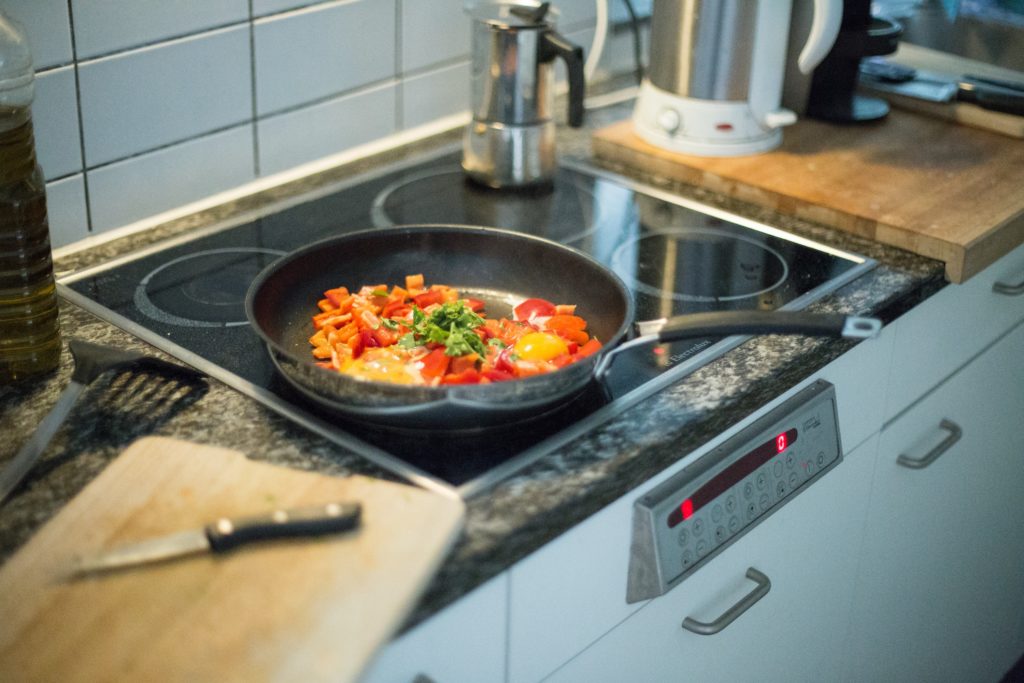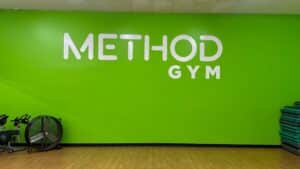Healthy food and clean eating are just as important as hitting the gym on a regular basis and are the key ingredients to seeing results from your sweat sessions. The trickiest part that many people struggle with is balance. They find it challenging to maintain an overall healthy diet and a gym membership while still having extra spending money to enjoy life–and let’s face it, if you’re health-conscious in the first place, you’re not going to give up those things, so what should you do if you’re tight on money?
Many people have the misconception that eating healthy is expensive because of the misread labels and overpriced organic options. Although grocery bills can stack up, the bills at your favorite restaurants can too when you’re forking over $50 or more a meal with an average plate costing around $13. In a typical restaurant scenario, both your wallet and waistline take the hits, but if you strategize correctly and shop smart, your grocery bill will be way kinder to you both financially and physically. Besides, if you’re able to dine out that much anyway, there really is no excuse to start putting your money into the kitchen. Here are some tips to help you eat healthy while on a budget.
Here’s How to Eat Right on a Budget
HAVE A PLAN AND TAKE ADVANTAGE OF LEFTOVERS
Without structure, we turn to the quickest and easiest options because we don’t already have all of the ingredients right in front of us to cook something. In the long run, we actually end up spending more money and consuming more calories because we turn to takeout and fast food. To avoid this, plan out all of your meals for the week, including the days when you think you’re more likely to dine out or meet friends for happy hour. While you’re doing this, research healthy recipes on social media sites like Pinterest and different food apps.
Many healthy recipes will typically feed more than two people, so if you’re only cooking for one or two, you have a pretty high chance of scoring leftovers for future meals in the week. Once you find realistic and simple healthy recipes, write out your meals on a calendar. Sometimes people often find that their planned meals get pushed back because they have too many leftovers from a previous dish. This is normal and actually a good thing. Take advantage of all the leftovers you can and freeze whatever you are able to, so you can cook something new a different night and go back to the leftovers on a night that you may not feel like cooking. This way, you don’t get bored of the same dish, nothing goes to waste, and you get your money’s worth.
KNOW THE BASICS AND BUY THE BASICS
When we say the basics, we are talking about foods that are inexpensive, versatile and are items you want to have on hand to cook with. This includes things like whole grain bread, eggs, olive oil, spices and skim milk. You also don’t need a gourmet spice cabinet to cook delicious and healthy meals and most basic spices like salt, pepper and garlic powder are very inexpensive. Olive oil and some other specialty spices might seem a bit pricey at first, but your kitchen needs items like these for cooking. Plus, they last forever, so you’ll save money in the long run.
If you’re cooking for one or two people, it might seem difficult to use bread and milk before their expiration dates. In this case, downsize to just a half gallon of milk and get creative with both items. Try to incorporate them into every other meal as you plan for the week. For example, eggs and toast are healthy and cheap breakfast choices, but can also be used for lunch or dinner as BLT sandwiches. Or ditch the bread for a day and incorporate hard boiled eggs into a homemade salad. Buying the basics allows you to hit two birds with one stone.
STOCK UP ON CANNED FOODS
Canned goods sometimes get a bad rap because they contain a lot of salt being non-perishable, but in the grand scheme, you could simply not add anymore salt to your dish, incorporate a fairly healthy side into your meal and save money. Choose canned pinto and black beans along with canned peas and corn to add variety. These could be considered basic foods that you want to have on hand, and you luckily can buy a lot for very little.
COUPONS AND SALE ITEMS ARE YOUR BEST FRIEND
These might be the most important aspects to smart shopping, and you probably already figured that, but just trust us–your mother wasn’t crazy for using a coupon to spend 60 cents on something instead of a dollar because it all adds up to big savings. If you don’t already, download coupon apps like Groupon and Retail Me Not, and make sure to be informed about your grocery store’s sale items. If you notice the grocery bill is getting too high, look at your items and double check if you really need something and if you can cut back on it. Chances are, it’s a “luxury” item and you could probably save a few bucks if you ditch it or find a coupon.
THE FREEZER IS COOL
Pun intended, but for those on a budget, frozen vegetables without added butter and salt are your saving grace–just avoid the section with the frozen pizza. Although fresh produce is a wonderful added perk to your refrigerator, many people have trouble using it before it goes bad, so it usually goes to waste and money goes down the drain. If you’re someone that absolutely needs fresh produce in your life, stock up on items like baby carrots, cherry tomatoes, cucumbers and bell peppers, and only buy what you will actually use in a week and incorporate into various meals. You can not only make salads out of these and use them in an assortment of dishes, but they can also be eaten as healthy snacks. Also, buy proteins like chicken breasts, ground turkey, lean ground beef and get in the habit of freezing them to increase their shelf life, which will also make cooking more convenient for you.
LIMIT TAKEOUT AND DINING OUT
As tough as this might seem, it actually becomes easier once you establish a healthy eating and cooking pattern. Limit your dining out to once a week or every other week, and completely restrict takeout for lunch. Pack all of your lunches for the work week, whether that’s a fresh salad with versatile vegetables that we’ve already mentioned or your leftover chicken from last night. You will save yourself a lot of money and calories this way and going to your favorite restaurant on a Saturday night will be something you look forward to after putting in all of that hard work toward your diet and workouts during the week.
SKIP THE SODA AND CANDY AISLES
You don’t need these things–plain and simple. Your body and your bank account will thank you later. Choose water instead of soda, add lemon or lime juice for flavor and choose light snacks like popcorn and snacks that are high in protein, like almonds. The great things about these options are that they trick your brain into thinking you’re eating more. Minus all of the butter and salt, you can usually eat a ton of popcorn, reduce calorie intake, feel satisfied longer and still have plenty left over as opposed to a bag of potato chips. Although almonds and many nuts are a bit pricier, they are packed with good fats and protein allowing you to eat less, feel fuller longer, satisfy a salty or crunchy craving and you end up needing to buy less, which as you probably can guess, is easier on your budget.
BOTTOM LINE
From the get-go this might seem daunting and unrealistic, and you might find other outlets or options that work better for you, but the ultimate goal is to live a balanced lifestyle where your wallet and workouts aren’t suffering from your food choices. As hard as it is to believe at first, you can eat healthy, save money, maintain a gym membership and still enjoy your life at the same time. It all comes down to moderation, consistency and compromise. Once you find how these strategies work best in your life, it will become a pattern and turn into a natural way of life where you won’t feel the need to document all of your meals on a calendar.
Resources
https://www.choosemyplate.gov/tips-for-every-aisle
http://www.pbs.org/parents/food-and-fitness/eat-smart/healthy-foods-on-a-budget/





